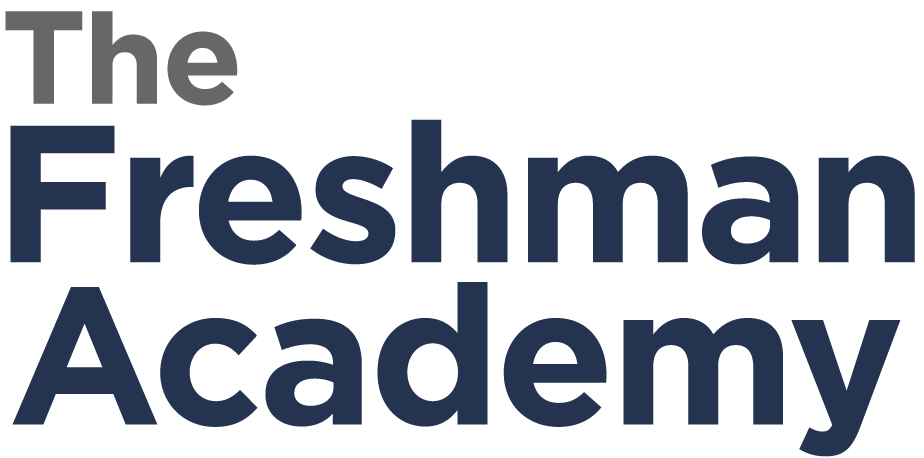The Flat Tire of High School: Missing Assignments
We've all seen it: a car parked on the side of the road with a driver hunched over, struggling with a flat tire. We know a car can’t keep going with a flat. Most people stop and take care of it, but for those who keep driving, the damage only gets worse.
The same thing happens with missing assignments. There are many reasons why assignments get missed, but the result is the same: looming failure. Some students continue on without addressing the issue. They lack the skills, awareness, or motivation to stop and get the necessary tools to get back on track. The longer they wait, the worse the problem becomes.
Today, I met with a group of freshmen sent to me by their teachers. These 19 students were chosen because they had too many missing assignments. It’s the end of the third quarter, and we’re too far along in the year to let them keep going without fixing things. They needed some new tools.
Turning the Missing Assignment Report into a “To-Do” List
Each student came to me with a printout of their missing assignments. This report often gets ignored. The students are well aware of their missing work—they don’t need another reminder. Some even find the list overwhelming or discouraging, and end up tossing it out.
I had each student put the report on their desk, and I made sure they each had a pen or pencil.
Then, I had them do three things while looking at their list. I call it E.M.R. :
Circle the two Easiest assignments on the list.
Circle the two assignments worth the Most points.
Circle the two Most Recent assignments.
Now, we have a manageable list. Next, we talked about the distractions that prevent action.
Understanding "Now" vs. "Most"
I explained to them that what they want now doesn’t always align with what they want most.
As Abraham Lincoln said, “Self-control is choosing between what you want now and what you want most.”
I had the freshmen write down the words “Now” and “Most” on a piece of paper. Then, I asked, “What do you want to do right NOW instead of working on your missing assignments?”
Some students named specific activities, but the most common response was, “Anything else!”
We then discussed the “Most” in Lincoln’s quote. I asked them, “How many of you want to graduate from ninth grade?” A majority of hands went up. Then I asked, “How many of you want to come back here next year as a freshman?” All hands went down. It was a moment of realization for them. Shame can grab attention, but it also prompts action.
I told them, “You need to realize that what you want right now—the phone, video games, time with friends, or anything else—needs to be replaced at least some of the time with what you want most.”
The Final Step: Prevention
There are two important realities freshmen need to understand:
Don’t be surprised when school gets hard.
Don’t be unprepared for new content.
Too often, freshmen come to high school expecting it to be easy and feel frustrated when it’s not. They might think the school or they themselves are doing something wrong. But the truth is, school is hard. I say this repeatedly to normalize the fear and anxiety that often lead to avoidance. Understanding that it’s okay to struggle helps them push through those feelings and focus on what they want most.
They also need to be prepared for new material. If we don’t help them catch up with new content, the list of missing assignments will never shrink.
I like to talk about SLANT (Sit up, Listen, Ask questions, Nod, Track the speaker). It’s a strategy for being engaged in class. I even have an entire garbage can filled with crumpled tape balls. I asked one student, Mikey, if he’d catch one. He wasn’t interested and let the tape ball sail over his head. But when I told him I would throw more, he sat up, put his hands out, nodded, and caught the next one.
We played catch for a while, and then I threw a bad pass. I asked Mikey to pick it up, and he did. I then turned to the rest of the class and said, “This is what happens every day in your classroom! Mikey is an example of a great student. He’s engaged. He’s ready for what I’m throwing at him. He’s using SLANT.”
I continued, “This is what teachers are doing all day long. Are you ready? Are you paying attention? Are you engaging in the lesson? This is how you keep your missing assignment list short. You can’t be unprepared for what teachers are throwing at you.”
Finally, at the end of the session, I showed them the last slide of my PowerPoint:
Root beer floats for all students who attend this class and have nine or fewer missing assignments on May 1st.
Conclusion
We hope events like this motivate a percentage of our freshmen to engage in their own repairs. Having shared this with all the teachers, it gives us a common language to come alongside stranded and often frustrated freshmen who need a fresh pair of tires to finish the journey.



